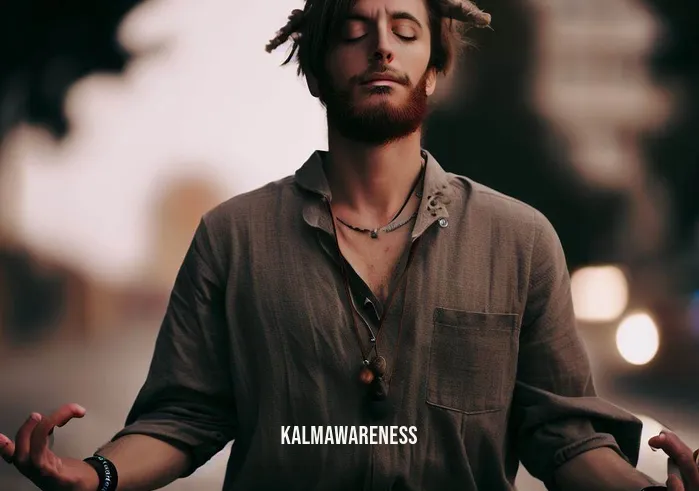Breaking Free from the Overthinking Trap
Understanding the Maze of Overthinking
Have you ever found yourself trapped in an endless loop of thoughts, analyzing every possible angle and outcome? This common experience, often referred to as overthinking, can be like wandering through a maze with no clear exit. It’s a mental state where your mind gets bogged down in details, hypotheticals, and “what-ifs,” leading to a paralyzing inability to make decisions or take action.
Interestingly, overthinking doesn’t just affect decision-making. It can seep into all areas of life, impacting your emotional well-being, relationships, and even physical health. It’s like carrying a backpack filled with unnecessary weights – the longer you carry it, the more exhausting it becomes.
The Art of Detaching from Overthinking
Detaching from overthinking isn’t about pushing thoughts away or ignoring them. Instead, it’s about learning to recognize when you’re spiraling into this pattern and gently guiding your mind back to a state of balance and clarity. Think of it as becoming the calm observer of your thoughts, rather than being swept away by them.
One effective approach is mindfulness, a practice that involves being fully present and engaged in the moment, without judgment. By focusing on the here and now, you can train your mind to let go of those endless streams of thoughts about the past and future. For more insights into this approach, consider exploring resources like Mindful Movement Sleep or Meditation Made Simple.
The Role of Self-Care in Detaching from Overthinking
Self-care is another crucial element in breaking the cycle of overthinking. It’s about giving your mind and body the care they need to function at their best. This can include anything from ensuring you get enough sleep, to engaging in physical activity, to practicing relaxation techniques. A great way to start is by exploring sustainable self-care methods that resonate with you, like those discussed in Sustainable Self-Care.
Remember, self-care isn’t a luxury – it’s an essential part of maintaining mental health and well-being. When you take care of your physical and emotional needs, you’re better equipped to handle stress and less likely to fall into overthinking.
Navigating Away from the Overthinking Maze
Detachment from overthinking is not a one-time fix but a journey of ongoing awareness and practice. It’s about learning to recognize the signs of overthinking and having a toolkit of strategies to help you step back and gain perspective.
Consider exploring various techniques and resources, like those on Mindful Hypnobirthing or How to Spell Stabilize, to find what works best for you. The key is to be patient with yourself as you navigate this journey. With time and practice, you’ll find it easier to detach from overthinking and enjoy a more peaceful and focused mind.
As we wrap up this first part of our exploration into detachment from overthinking, let’s ponder this: What would your life look like if you could step back from overthinking and see your thoughts for what they truly are – just thoughts, not directives? How would this newfound perspective change the way you approach challenges and opportunities? Stay tuned for more insights in the next section.

Embracing Mindfulness to Overcome Overthinking
The Mindful Approach to Breaking the Overthinking Cycle
Building on our understanding of overthinking, let’s delve deeper into mindfulness, a powerful tool in achieving detachment from overthinking. Mindfulness, in its essence, is the practice of being fully present and engaged with the current moment, acknowledging and accepting one’s feelings, thoughts, and bodily sensations without judgment.
This approach shifts the focus from a future-oriented, “what-if” mentality to a more grounded, present-moment awareness. The beauty of mindfulness lies in its simplicity and accessibility. It doesn’t require any special equipment or environment; it’s about tuning into the now, wherever you are.
Practical Mindfulness Techniques
Here are some practical techniques to cultivate mindfulness:
Mindful Breathing: Simply focus on your breath, noticing the sensation of air entering and exiting your body. This can serve as an anchor, bringing you back to the present moment whenever your mind starts to wander.
Body Scan Meditation: This involves mentally scanning your body from head to toe, observing any sensations, tension, or discomfort without trying to change them.
Mindful Observation: Pick an object and focus all your attention on it. Notice every detail, color, shape, and texture.
For more detailed guidance on these practices, Jack Kornfield’s Meditation for Beginners offers a great resource.
Overcoming Barriers in Mindfulness Practice
While mindfulness is a powerful tool, it’s common to encounter barriers in practice. Distractions, impatience, and a tendency to revert to overthinking are common challenges. Acknowledging these barriers is the first step to overcoming them.
Strategies to Enhance Mindfulness
- Set Realistic Expectations: Understand that mindfulness is a skill that develops over time. It’s normal for the mind to wander.
- Create a Routine: Regular practice, even for a few minutes a day, can significantly improve your ability to remain present.
- Use Guided Meditation: For beginners, guided sessions can be incredibly helpful. Platforms like Mindful Hypnobirthing offer structured guidance.
The Power of Letting Go
“Letting go” is a vital aspect of mindfulness that aids in detachment from overthinking. It involves releasing the grip of persistent thoughts and worries, and it can be incredibly liberating.
Table: Benefits of Letting Go
| Benefit | Description |
|---|---|
| Reduced Stress | By not clinging to thoughts, you reduce the mental load, leading to decreased stress. |
| Improved Decision-Making | Clearer thinking allows for more rational and less emotionally-driven decisions. |
| Enhanced Emotional Well-being | Letting go of negative thought patterns boosts overall emotional health. |
| Increased Presence | Being more present enhances the quality of your interactions and experiences. |
Integrating Mindfulness into Daily Life
Integrating mindfulness into your everyday life can transform the way you interact with the world. Simple practices like mindful walking, eating, or even listening can turn routine activities into opportunities for mindfulness.
For a deeper exploration of integrating mindfulness into daily routines, Rouse Yoga provides insightful tips and techniques.
As we conclude this section, it’s essential to reflect on how mindfulness and the art of letting go can reshape our experiences and relationships. How would our interactions change if we approached them with full presence and without the baggage of overthinking? How would our inner dialogue transform if we learned to observe our thoughts without getting entangled in them? These are compelling questions to ponder as we move towards the final section, where we’ll tie together these concepts and explore how to sustainably integrate them into our lives for lasting change.

Crafting a Life Beyond Overthinking
The Journey to Mindful Living
As we reach the culmination of our exploration into detachment from overthinking, it’s crucial to reflect on how the concepts of mindfulness and self-care can translate into a more balanced, fulfilling life. The journey towards detaching from overthinking is not just about reducing stress or anxiety; it’s about embracing a life where each moment is lived fully, and thoughts are managed effectively.
Integrating Mindfulness into Everyday Life
The real power of mindfulness lies in its application to daily life. It’s about making a conscious effort to be present in every task, conversation, and thought. This shift in approach can transform mundane activities into opportunities for growth and self-discovery.
- Mindful Eating: Pay attention to the flavors, textures, and sensations of eating.
- Mindful Walking: Notice the rhythm of your steps, the feel of the ground under your feet, and the sounds around you.
- Mindful Listening: Listen actively and fully to others, without planning your response while they speak.
The Role of Continued Learning and Growth
Detachment from overthinking is a dynamic process that benefits greatly from continued learning and growth. Engaging with resources such as Train Your Mind to Be Stronger Than Your Feelings and Gratitude Meditation Sleep can provide fresh perspectives and deepen your understanding of mindfulness practices.
Future Applications of Detachment from Overthinking
Looking ahead, the principles of detachment from overthinking can be applied in numerous scenarios:
- In the Workplace: Implementing mindfulness to enhance focus and creativity while reducing stress and burnout.
- In Relationships: Practicing mindful communication to build deeper connections and understanding.
- In Personal Development: Using mindfulness to foster self-awareness and personal growth.
Encouraging Reader Participation
As you reflect on this journey, consider how detachment from overthinking might manifest in your life. What specific areas could benefit from a more mindful approach? How might your daily interactions change if you were more present and less preoccupied with overthinking?
Actionable Insights for Moving Forward
- Start Small: Begin with one or two mindfulness practices and gradually incorporate them into your routine.
- Stay Curious: Explore different mindfulness techniques and resources to find what resonates with you.
- Practice Patience: Remember that detachment from overthinking is a skill that develops over time.
Final Thoughts and Next Steps
In conclusion, detachment from overthinking is not about silencing your thoughts but learning to manage them with mindfulness and presence. It’s a journey of self-discovery and personal growth that requires patience, practice, and a willingness to embrace each moment as it comes.
Summary in Bullet Points
- Overthinking is a common challenge that can be addressed through mindfulness and self-care.
- Mindfulness practices like mindful breathing, body scans, and mindful observation are key to detachment from overthinking.
- Integrating mindfulness into daily life transforms routine activities into opportunities for growth.
- Continued learning and application in various life aspects, such as work and relationships, extend the benefits of mindfulness.
- Detachment from overthinking is a dynamic process that evolves with consistent practice and patience.
As we conclude this exploration, I encourage you to delve deeper into the world of mindfulness and explore how its principles can enrich your life. Remember, the journey towards a more mindful, less overthinking-centered life is ongoing, and each step, no matter how small, is a step towards greater peace and fulfillment.





